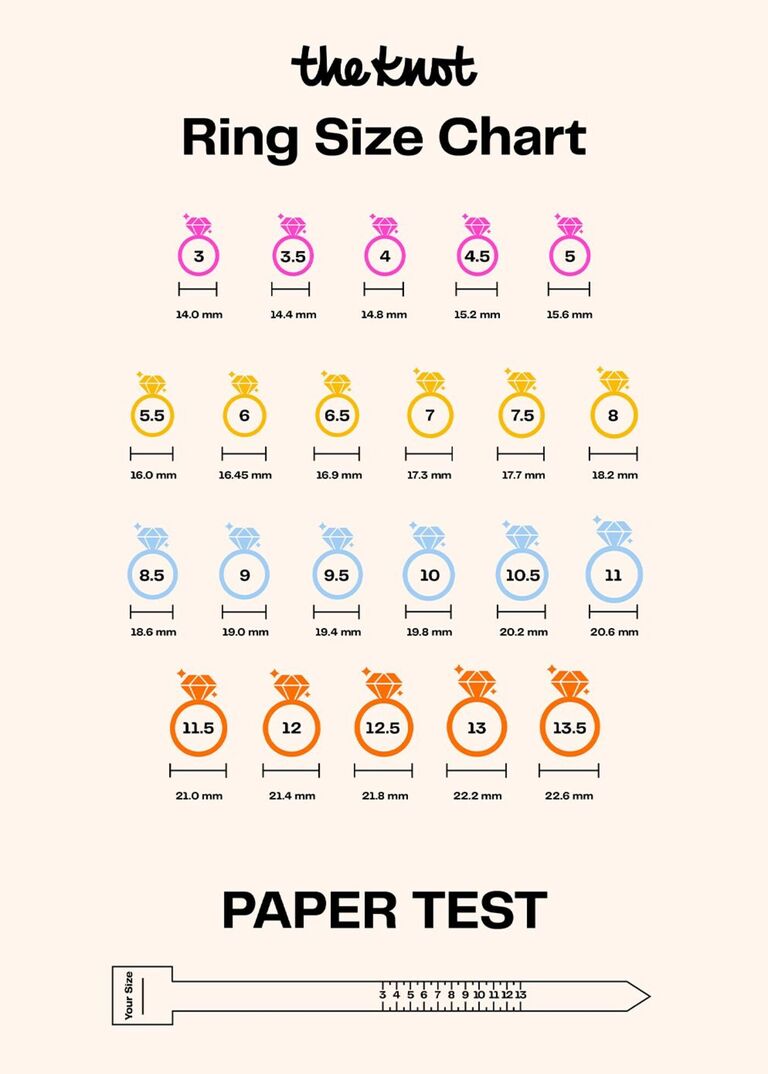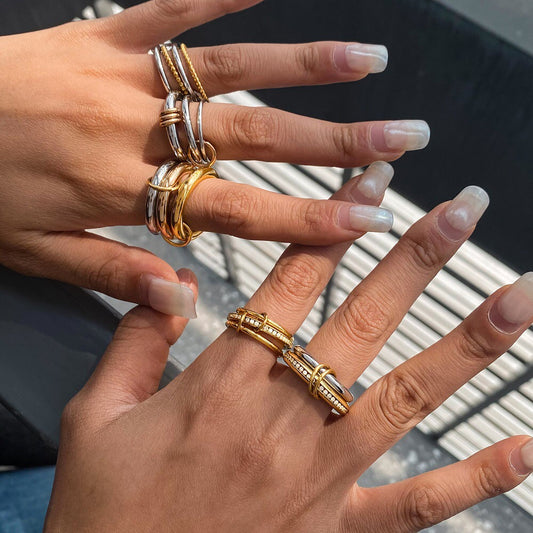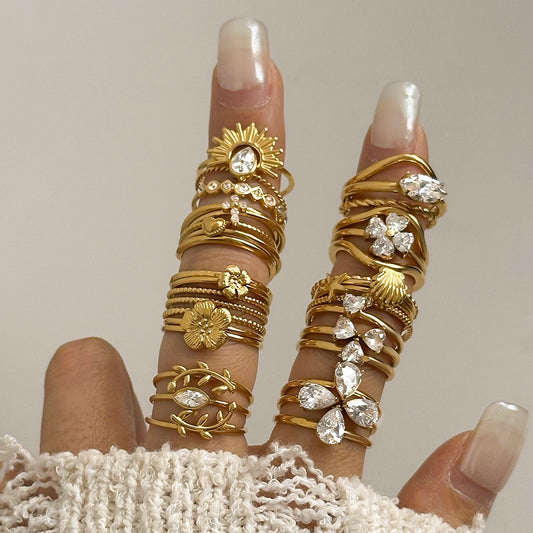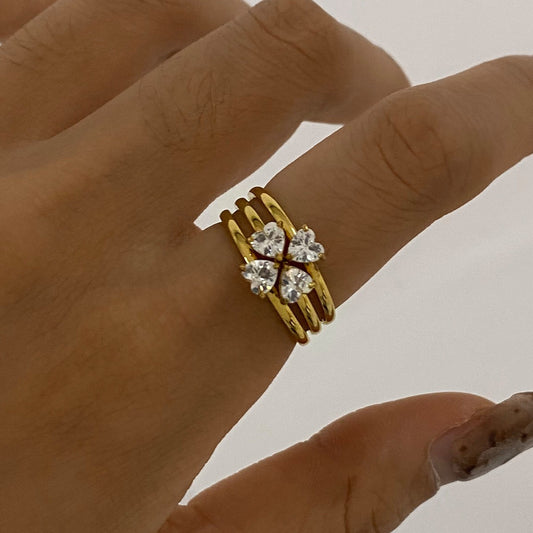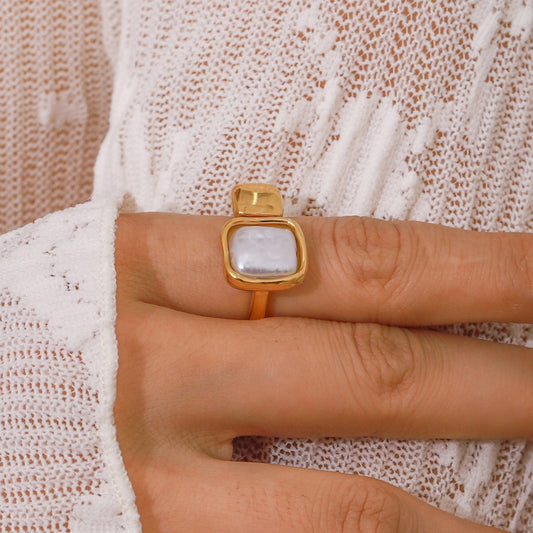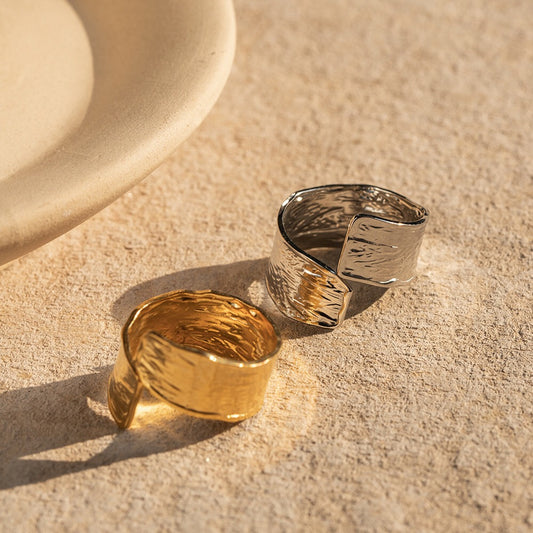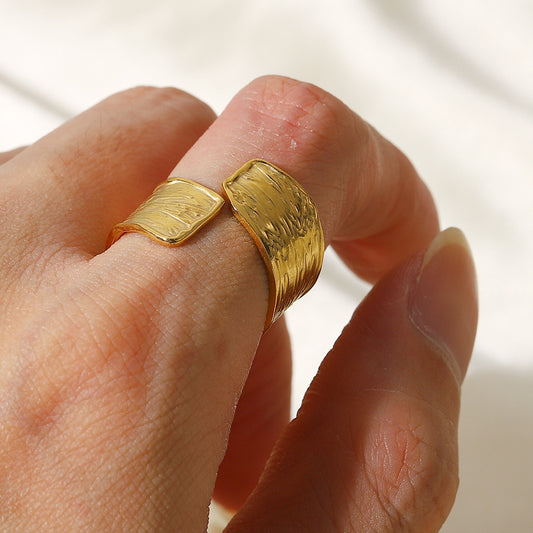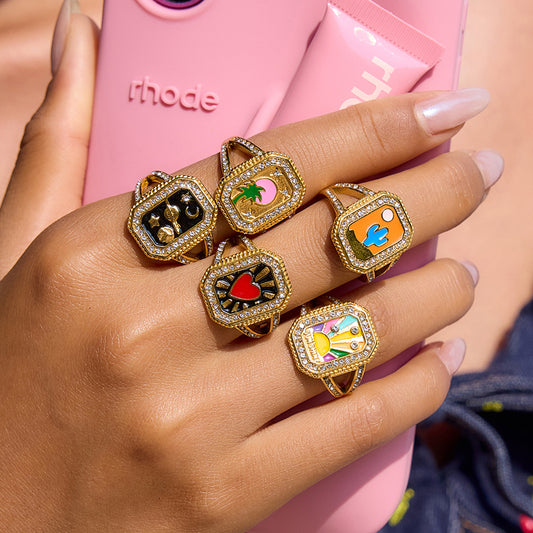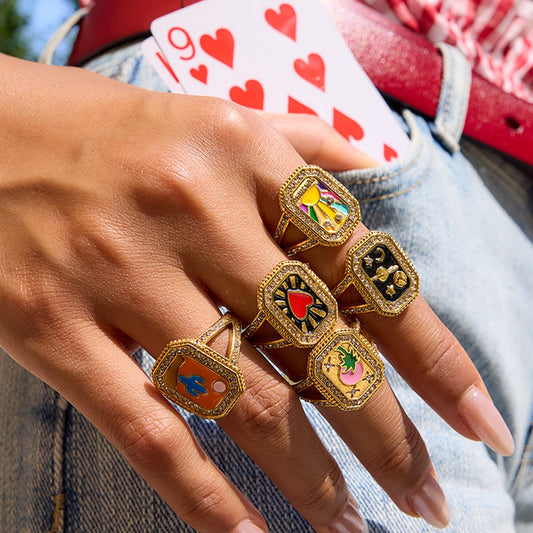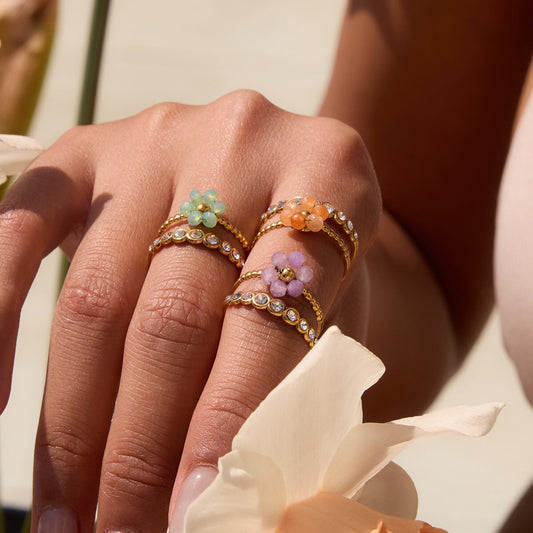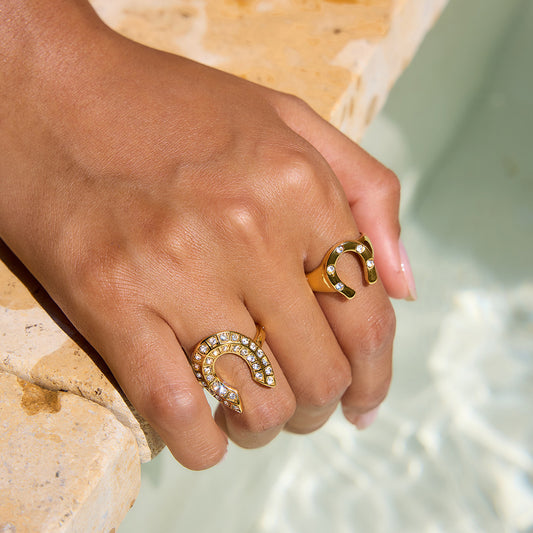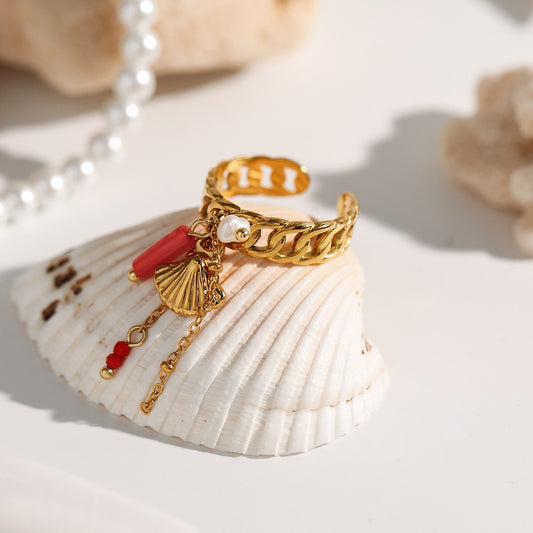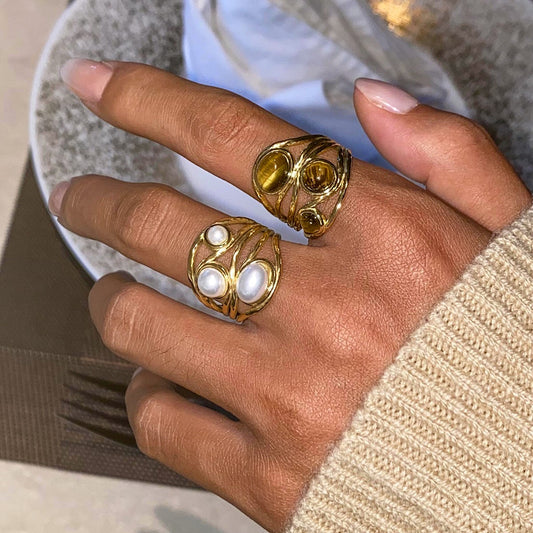Measuring a ring for size is a critical step in ensuring jewelry feels comfortable and looks great—but it’s often overlooked. In fact, The global jewelry market size was estimated at USD 366.79 billion in 2024 and is projected to reach USD 578.45 billion by 2033, growing at a CAGR of 5.3%. Whether you’re buying a ring for yourself, surprising a partner with an engagement ring, or gifting a family member a sentimental piece, getting the size right avoids the hassle of returns and ensures the ring is ready to wear and cherish. This guide breaks down simple, accurate methods for measuring a ring for size, plus tips to avoid common mistakes and answer your most pressing questions.
What is Measuring a Ring for Size?
Measuring a ring for size is the process of determining the correct circumference or diameter of a finger to find the corresponding standard ring size (e.g., US sizes 4–13, UK sizes A–Z). It ensures the ring fits snugly enough to stay on but loosely enough to slide over the knuckle without discomfort. Unlike clothing sizes, ring sizes are consistent across most brands (with minor regional variations), making accurate measurement key to a perfect fit.
Why Accurate Measurement Matters
A ring that’s too small can feel tight, restrict circulation, or get stuck on the finger—especially in warm weather. A ring that’s too large risks slipping off and getting lost, which is devastating for valuable pieces like engagement rings or family heirlooms. Accurate measurement also saves time and money: returning a mis-sized ring often means waiting weeks for a replacement, and resizing some designs (like those with intricate settings or pavé diamonds) can be costly or even damage the piece.

Key Terms to Know
When measuring a ring for size, you’ll encounter two key measurements:
-
Finger Circumference: The distance around the thickest part of the finger (usually the knuckle area). This is the most common measurement used to determine ring size.
-
Ring Diameter: The distance across the inside of an existing ring that fits well. This is a quick method if you already have a ring that works for the intended finger.
Why is Measuring a Ring for Size Important?
Measuring a ring for size isn’t just a “nice-to-do”—it’s essential for a positive jewelry experience, whether you’re shopping in-store or online.
Avoids Return Hassles
Online jewelry purchases account for 40% of all ring sales, and mis-sized rings are the top reason for returns (per the same Shopify report). Measuring ahead of time eliminates the need to ship the ring back, wait for a replacement, or pay for resizing fees—saving you time and frustration.
Ensures Comfort and Wearability
A well-fitted ring is one you’ll want to wear every day. A ring that’s too tight may cause indentations or discomfort, while one that’s too loose may be left in a jewelry box to avoid loss. Accurate measurement ensures the ring is comfortable enough for all-day wear, whether you’re typing, cooking, or exercising.
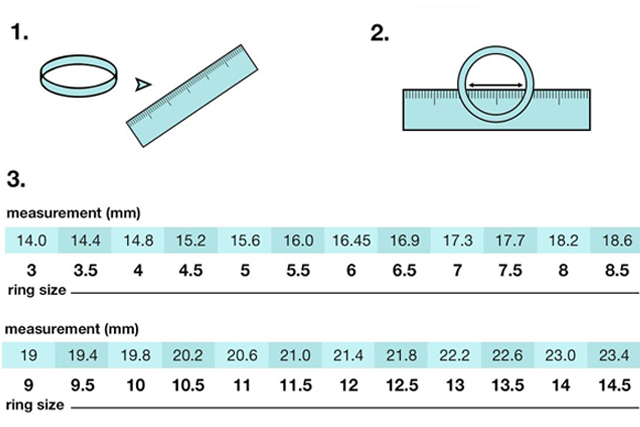
Protects Valuable Pieces
For expensive or sentimental rings (like engagement rings, wedding bands, or family heirlooms), a poor fit is a risk. A loose ring can slip off during daily activities—at the gym, while washing dishes, or even while sleeping—and get lost or damaged. Measuring a ring for size correctly protects your investment and keeps cherished pieces safe.
Tools Needed for Measuring a Ring for Size
You don’t need fancy equipment to measure a ring for size—most methods use items you already have at home. Here are the most common tools:
Household Items
-
String or Dental Floss: Flexible and easy to wrap around the finger. Avoid thick string, as it can skew measurements.
-
Ruler or Tape Measure: A soft measuring tape (like a sewing tape) works best for circumference, but a rigid ruler can measure the diameter of an existing ring.
-
Pen or Marker: To mark the string or tape once wrapped around the finger.
-
Existing Ring: If the person already has a ring that fits the intended finger, use it to measure diameter (a quick shortcut!).
Specialized Tools
-
Ring Sizer Set: A plastic or metal set of rings in every standard size (available online for \(5–\)15). This is the most accurate tool, as you can slide the sizers on to find the best fit.
-
Printable Ring Sizer: Free templates available from jewelry brands (print, cut, and wrap around the finger). Ensure your printer is set to “100% scale” to avoid shrinking the template.

Step-by-Step Methods for Measuring a Ring for Size
There are three simple, reliable methods for measuring a ring for size—choose the one that works best for your situation.
Method 1: Using String or Dental Floss (No Existing Ring)
This is the easiest method if you don’t have a ring sizer or existing ring.
-
Prepare the tools: Grab a piece of string (6–8 inches long), a ruler, and a pen.
-
Wrap the string: Gently wrap the string around the thickest part of the finger (usually the knuckle, since the ring needs to slide over it). Don’t pull too tight—leave a small gap (about the width of a piece of paper) to ensure comfort.
-
Mark the string: Use the pen to mark where the string overlaps itself.
-
Measure the length: Lay the string flat and measure the distance between the two marks with the ruler (in millimeters, if possible—this is more precise than inches).
-
Find the size: Use a ring size chart (most jewelry brands provide these online) to match the circumference to the standard size. For example, a 54mm circumference equals a US size 7.
Method 2: Using an Existing Ring (Quick Shortcut)
If the person has a ring that fits the intended finger, this method is fast and accurate.
-
Grab the ring: Select a ring that fits the same finger you’re measuring for (e.g., a wedding band for the ring finger).
-
Measure the diameter: Place the ring flat on a ruler and measure the distance across the inside of the ring (from one inner edge to the opposite inner edge). Avoid measuring the outer edge—this will give you a size that’s too big.
-
Calculate circumference (optional): Multiply the diameter by 3.14 (pi) to get the circumference, or use a size chart that converts diameter directly to ring size. For example, a 17.2mm diameter equals a US size 7.

Method 3: Using a Ring Sizer Set (Most Accurate)
A ring sizer set is the gold standard for measuring a ring for size, especially for important purchases like engagement rings.
-
Choose the sizers: Select a set with sizes that match the region you’re shopping in (e.g., US, UK, EU).
-
Test the sizers: Slide the sizers onto the finger one by one. The correct size should slide over the knuckle with slight resistance and sit comfortably at the base of the finger—you should be able to twist it slightly without it slipping off.
-
Check for temperature: Fingers swell in warm weather or after exercise, so measure when the finger is at a normal temperature (avoid measuring right after a shower, workout, or meal). If you’re unsure, measure twice (once in the morning, once in the evening) and go with the larger size.
Tips for Measuring a Ring for Size (Avoid Common Mistakes)
Even the best methods can go wrong with small missteps. Follow these tips to ensure accuracy:
Measure the Right Finger
Fingers on the same hand can vary in size—for example, the ring finger is often 1–2 sizes smaller than the middle finger. If you’re measuring for a specific occasion (e.g., engagement ring), confirm which finger the ring will be worn on. For surprise gifts, ask a friend or family member for clues (e.g., “Does they wear a ring on their left ring finger that’s similar in size to their right middle finger?”).
Account for Swelling
Fingers swell due to temperature, hydration, and activity. To avoid measuring a size that’s too small:
-
Measure in the evening (fingers are slightly larger than in the morning).
-
Avoid measuring after a workout, hot shower, or heavy meal.
-
If the finger swells often (e.g., due to pregnancy or weather), choose a size that’s ½ size larger than your measurement.

Don’t Guess Based on Clothing Size
Clothing size has no correlation to ring size—someone who wears a size 4 in dresses could have a size 8 ring finger, and vice versa. Always measure directly rather than guessing.
For Surprise Gifts: Be Sneaky (But Accurate)
If you’re measuring a ring for size as a surprise:
-
Borrow an existing ring from their jewelry box (make sure it’s for the intended finger) and measure its diameter.
-
Trace the inside of the ring on a piece of paper and take the tracing to a jeweler for sizing.
-
Ask a partner to “help” you measure your own finger, then casually suggest measuring theirs too (“Just to compare!”).
How to Verify Your Ring Size Measurement
Once you’ve measured, take these steps to confirm the size is correct:
Check with a Jeweler
Most jewelry stores offer free ring sizing. If you’re unsure about your measurement, visit a local jeweler—they’ll use a professional sizer to confirm the size. This is especially important for expensive rings like engagement bands.
Test with a Cheap Ring
If you’re shopping online, order a cheap plastic or metal ring in your measured size first. Wear it for a day to see if it fits—if it’s too tight or loose, adjust your size before ordering the real ring.
Use a Printable Sizer (With Caution)
Printable ring sizers are convenient, but they’re only accurate if printed correctly. Set your printer to “100% scale” (no zooming in or out), and use a ruler to confirm the template’s “test line” matches the stated length (e.g., a 50mm test line should measure exactly 50mm).
Frequently Asked Questions About Measuring a Ring for Size
Q: What if my knuckle is larger than the base of my finger?
A: Measure the circumference of both the knuckle and the base. Choose a size that’s between the two—this ensures the ring slides over the knuckle but doesn’t slip off the base. If the difference is more than 1mm, consider a “comfort fit” ring (with a rounded inner edge) that’s easier to slide on.
Q: Do ring sizes vary by country?
A: Yes! US sizes use a numerical scale (4–13), UK sizes use letters (A–Z), and EU sizes use millimeters (40–70). Always check the brand’s size chart to convert your measurement to the correct regional size. For example, a US size 7 equals a UK size N and an EU size 54.
Q: Can I measure a ring for size if the finger has a tattoo or is injured?
A: Tattoos don’t affect measurement, but injured or swollen fingers (e.g., from a sprain) do. Wait until the injury heals and swelling goes down before measuring—otherwise, you’ll get an inaccurate size.
Q: How often should I re-measure my ring size?
A: Re-measure if you experience significant weight gain/loss, pregnancy, or changes in finger swelling (e.g., due to medication). Most people’s ring size stays consistent, but these life changes can alter finger circumference.
Conclusion: Master Measuring a Ring for Size for Perfect-Fit Jewelry
Measuring a ring for size is a simple process, but it’s one that makes a huge difference in how you enjoy your jewelry. With 65% of shoppers initially ordering the wrong size, taking the time to measure accurately saves frustration, money, and the risk of losing cherished pieces. Whether you use string, an existing ring, or a professional sizer, following the steps in this guide ensures your next ring fits like it was made just for you.
Ready to shop for a ring with confidence? Use our free printable ring sizer (link here) to measure your finger today, or visit our store to get sized by a professional. Don’t let a wrong size ruin your jewelry experience—master measuring a ring for size and find the perfect fit for every piece!


